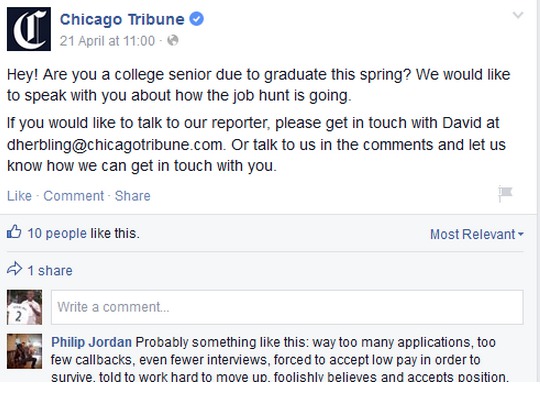Crowdsourcing is a very useful strategy in data journalism, I learned the other day.
This is especially true in this era where news first breaks out in social media, leaving reporters scratching their heads about Day Two journalism.
Crowdsourcing — the art of gathering information from the general public — may be the antidote to the onslaught on our careers by blogging platforms such as Facebook and Twitter.
I will use a personal experience as an example.
The Bureau of Labor Statistics last month, as is ritual, released its report on job numbers. It showed that unemployment rates for U.S. job seekers with at least a bachelor’s degree had increased marginally. We also received a separate study showing that U.S. companies plan to hire more fresh graduates this year.
My editor, Julie, presented me with these statistics and tasked me to do a story, based on the data and interviews with soon-to-be-graduating college students. We brainstormed and came to the conclusion that crowdsourcing was the best strategy to get first-hand experiences of graduating seniors.
We thus hatched a plan that started with a notice on the Chicago Tribune Facebook page seeking to speak to imminent graduates to measure how rough the tides are in the labor market sea.
Below is the post:
The responses flowed in fast and furious, and I had a variety of seniors reaching out to me and sharing their successes, frustrations and hopes.
At the end of the day (actually two weeks!), we were able to produce a story rich with live quotes and experiences, while at the same infused with revealing data and statistics.
And honestly, I don’t think social media and bloggers can beat this strategy!
I think crowdsourcing and data journalism is the way to go, and has a potential to produce stories that connect with people, communities while at the same time offering insights.






